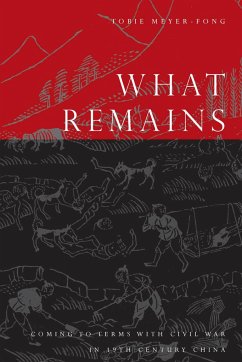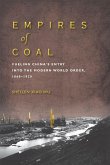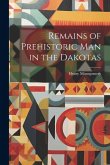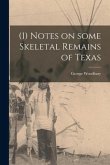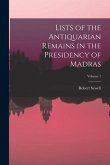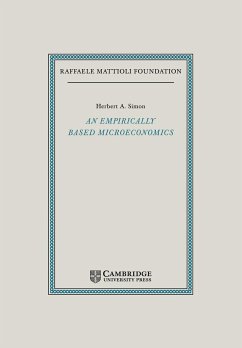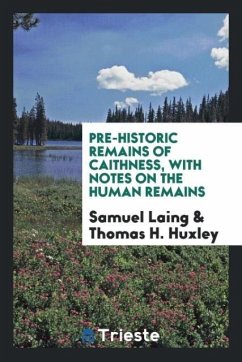- Broschiertes Buch
- Merkliste
- Auf die Merkliste
- Bewerten Bewerten
- Teilen
- Produkt teilen
- Produkterinnerung
- Produkterinnerung
By calling attention to the human costs of China's Taiping War, What Remains offers new perspectives on issues of abiding interest to historians of 19th and 20th century China: the effects of lingering dynastic decline, the effects of violence on local communities, the emergence of elite activism, and the changing relationship between state and society.
Andere Kunden interessierten sich auch für
![Empires of Coal Empires of Coal]() Shellen Xiao WuEmpires of Coal33,99 €
Shellen Xiao WuEmpires of Coal33,99 €![Remains of Prehistoric man in the Dakotas Remains of Prehistoric man in the Dakotas]() Henry MontgomeryRemains of Prehistoric man in the Dakotas16,99 €
Henry MontgomeryRemains of Prehistoric man in the Dakotas16,99 €![(1) Notes on Some Skeletal Remains of Texas (1) Notes on Some Skeletal Remains of Texas]() George Woodbury(1) Notes on Some Skeletal Remains of Texas16,99 €
George Woodbury(1) Notes on Some Skeletal Remains of Texas16,99 €![Lists of the Antiquarian Remains in the Presidency of Madras; Volume 1 Lists of the Antiquarian Remains in the Presidency of Madras; Volume 1]() Robert SewellLists of the Antiquarian Remains in the Presidency of Madras; Volume 128,99 €
Robert SewellLists of the Antiquarian Remains in the Presidency of Madras; Volume 128,99 €![Account of the Removal of the Remains of Stephen F. Austin From Peach Point Cemetery Account of the Removal of the Remains of Stephen F. Austin From Peach Point Cemetery]() Guy Morrisoncomp BryanAccount of the Removal of the Remains of Stephen F. Austin From Peach Point Cemetery18,99 €
Guy Morrisoncomp BryanAccount of the Removal of the Remains of Stephen F. Austin From Peach Point Cemetery18,99 €![Remains Historical & Literary connected with palatine counties of Lancaster and Chester, Vol. XXVIII; The Jacobite trials at Manchester in 1694. From an unpublished manuscript Remains Historical & Literary connected with palatine counties of Lancaster and Chester, Vol. XXVIII; The Jacobite trials at Manchester in 1694. From an unpublished manuscript]() William BeamontRemains Historical & Literary connected with palatine counties of Lancaster and Chester, Vol. XXVIII; The Jacobite trials at Manchester in 1694. From an unpublished manuscript20,99 €
William BeamontRemains Historical & Literary connected with palatine counties of Lancaster and Chester, Vol. XXVIII; The Jacobite trials at Manchester in 1694. From an unpublished manuscript20,99 €![Pre-Historic Remains of Caithness, with Notes on the Human Remains Pre-Historic Remains of Caithness, with Notes on the Human Remains]() Samuel LaingPre-Historic Remains of Caithness, with Notes on the Human Remains20,99 €
Samuel LaingPre-Historic Remains of Caithness, with Notes on the Human Remains20,99 €-
-
-
By calling attention to the human costs of China's Taiping War, What Remains offers new perspectives on issues of abiding interest to historians of 19th and 20th century China: the effects of lingering dynastic decline, the effects of violence on local communities, the emergence of elite activism, and the changing relationship between state and society.
Hinweis: Dieser Artikel kann nur an eine deutsche Lieferadresse ausgeliefert werden.
Hinweis: Dieser Artikel kann nur an eine deutsche Lieferadresse ausgeliefert werden.
Produktdetails
- Produktdetails
- Verlag: Stanford University Press
- Seitenzahl: 336
- Erscheinungstermin: 10. Dezember 2013
- Englisch
- Abmessung: 228mm x 151mm x 25mm
- Gewicht: 460g
- ISBN-13: 9780804792066
- ISBN-10: 0804792062
- Artikelnr.: 40052340
- Herstellerkennzeichnung
- Libri GmbH
- Europaallee 1
- 36244 Bad Hersfeld
- gpsr@libri.de
- Verlag: Stanford University Press
- Seitenzahl: 336
- Erscheinungstermin: 10. Dezember 2013
- Englisch
- Abmessung: 228mm x 151mm x 25mm
- Gewicht: 460g
- ISBN-13: 9780804792066
- ISBN-10: 0804792062
- Artikelnr.: 40052340
- Herstellerkennzeichnung
- Libri GmbH
- Europaallee 1
- 36244 Bad Hersfeld
- gpsr@libri.de
Tobie Meyer-Fong is Associate Professor and Director of Graduate Studies in the History Department at Johns Hopkins University. She is the author of Building Culture in Early Qing Yangzhou (Stanford, 2003) and co-editor of the journal Late Imperial China.
Contents and Abstracts
1War
chapter abstract
This chapter introduces the main themes of the book and places it in
historiographical context. The chapter argues that the Taiping Rebellion
should be termed a civil war, and should be understood in relation to the
questions and concerns of those who lived through it. It calls attention to
the devastating human and material consequences of the Taiping War. The
chapter identifies the reasons scholars in both the United States and China
have tended to focus on other issues. Western scholars have emphasized the
Taiping movement's Christian orientation or roots in local religious
practice or the biography of the movement's founder. Chinese scholarship in
general highlights place of the Taiping Heavenly Kingdom in the history of
revolution in China.
2Words
chapter abstract
This chapter uses the figure of Yu Zhi (1809-1874), a failed examination
candidate and charismatic pro-Qing philanthropist, to explore the
religiosity of pro-Qing Confucian orthodoxy. It thus adds to our
understanding of the local elite activists who played a leading role in
wartime defense and post-war reconstruction.
3Marked Bodies
chapter abstract
This chapter examines how wartime identities were communicated and
understood through tattoos, hairstyle, and clothing. It argues that the
emphasis on (permanent) inscription of identities in fact bespoke profound
anxiety about deception and betrayal, as wartime affinities were widely
understood to be contingent and volatile.
4Bones and Flesh
chapter abstract
This chapter asks what happened to the dead during the Taiping War. It
examines the political meanings attached to corpses in Late Imperial China.
The presence of unburied corpses represented a profound failure on the part
of the dynasty and signaled a crisis of political legitimacy. Additionally,
cannibalism-both rumored and real-indicated the total breakdown of society.
Stories about coffins and corpses, lost and miraculously returned, heralded
the virtue of the dead and their families. The act of burial conferred
legitimacy upon those who did the burying: local officials and
philanthropists.
5Wood and Ink
chapter abstract
This chapter centers on efforts to commemorate the war dead in shrines and
books. Using rituals and language provided by the dynasty, local
communities sought to underscore their loyalty and obscure wartime
ambivalence. This chapter deals with the construction of post-war myths
about wartime loyalty and dynastic victory. It also examines the ways in
which groups empowered by the war made use of commemoration to further
their causes in the post-war.
6Loss
chapter abstract
This chapter highlights one man's efforts to honor his deceased mother in
writing. As a boy of eight, Zhang Guanglie witnessed his mother's murder
during the Taiping occupation of Hangzhou in 1861. In his "Record of 1861,"
he both uses and challenges the conventions used in official commemoration
for the war dead. His idiosyncratic and fragmentary book documents his
deeply personal search for consolation. The chapter also deals with the
role of publishing and newspapers as a medium for the formation of new
types of post-war community.
7Endings
chapter abstract
This short chapter considers the ways in which war transformed the lives of
survivors. It looks at ghost stories, memoirs, and Buddhist rites as places
where emotion and memory lingered, unsettled, giving lie to the easy
narrative of dynastic victory and communal closure.
1War
chapter abstract
This chapter introduces the main themes of the book and places it in
historiographical context. The chapter argues that the Taiping Rebellion
should be termed a civil war, and should be understood in relation to the
questions and concerns of those who lived through it. It calls attention to
the devastating human and material consequences of the Taiping War. The
chapter identifies the reasons scholars in both the United States and China
have tended to focus on other issues. Western scholars have emphasized the
Taiping movement's Christian orientation or roots in local religious
practice or the biography of the movement's founder. Chinese scholarship in
general highlights place of the Taiping Heavenly Kingdom in the history of
revolution in China.
2Words
chapter abstract
This chapter uses the figure of Yu Zhi (1809-1874), a failed examination
candidate and charismatic pro-Qing philanthropist, to explore the
religiosity of pro-Qing Confucian orthodoxy. It thus adds to our
understanding of the local elite activists who played a leading role in
wartime defense and post-war reconstruction.
3Marked Bodies
chapter abstract
This chapter examines how wartime identities were communicated and
understood through tattoos, hairstyle, and clothing. It argues that the
emphasis on (permanent) inscription of identities in fact bespoke profound
anxiety about deception and betrayal, as wartime affinities were widely
understood to be contingent and volatile.
4Bones and Flesh
chapter abstract
This chapter asks what happened to the dead during the Taiping War. It
examines the political meanings attached to corpses in Late Imperial China.
The presence of unburied corpses represented a profound failure on the part
of the dynasty and signaled a crisis of political legitimacy. Additionally,
cannibalism-both rumored and real-indicated the total breakdown of society.
Stories about coffins and corpses, lost and miraculously returned, heralded
the virtue of the dead and their families. The act of burial conferred
legitimacy upon those who did the burying: local officials and
philanthropists.
5Wood and Ink
chapter abstract
This chapter centers on efforts to commemorate the war dead in shrines and
books. Using rituals and language provided by the dynasty, local
communities sought to underscore their loyalty and obscure wartime
ambivalence. This chapter deals with the construction of post-war myths
about wartime loyalty and dynastic victory. It also examines the ways in
which groups empowered by the war made use of commemoration to further
their causes in the post-war.
6Loss
chapter abstract
This chapter highlights one man's efforts to honor his deceased mother in
writing. As a boy of eight, Zhang Guanglie witnessed his mother's murder
during the Taiping occupation of Hangzhou in 1861. In his "Record of 1861,"
he both uses and challenges the conventions used in official commemoration
for the war dead. His idiosyncratic and fragmentary book documents his
deeply personal search for consolation. The chapter also deals with the
role of publishing and newspapers as a medium for the formation of new
types of post-war community.
7Endings
chapter abstract
This short chapter considers the ways in which war transformed the lives of
survivors. It looks at ghost stories, memoirs, and Buddhist rites as places
where emotion and memory lingered, unsettled, giving lie to the easy
narrative of dynastic victory and communal closure.
Contents and Abstracts
1War
chapter abstract
This chapter introduces the main themes of the book and places it in
historiographical context. The chapter argues that the Taiping Rebellion
should be termed a civil war, and should be understood in relation to the
questions and concerns of those who lived through it. It calls attention to
the devastating human and material consequences of the Taiping War. The
chapter identifies the reasons scholars in both the United States and China
have tended to focus on other issues. Western scholars have emphasized the
Taiping movement's Christian orientation or roots in local religious
practice or the biography of the movement's founder. Chinese scholarship in
general highlights place of the Taiping Heavenly Kingdom in the history of
revolution in China.
2Words
chapter abstract
This chapter uses the figure of Yu Zhi (1809-1874), a failed examination
candidate and charismatic pro-Qing philanthropist, to explore the
religiosity of pro-Qing Confucian orthodoxy. It thus adds to our
understanding of the local elite activists who played a leading role in
wartime defense and post-war reconstruction.
3Marked Bodies
chapter abstract
This chapter examines how wartime identities were communicated and
understood through tattoos, hairstyle, and clothing. It argues that the
emphasis on (permanent) inscription of identities in fact bespoke profound
anxiety about deception and betrayal, as wartime affinities were widely
understood to be contingent and volatile.
4Bones and Flesh
chapter abstract
This chapter asks what happened to the dead during the Taiping War. It
examines the political meanings attached to corpses in Late Imperial China.
The presence of unburied corpses represented a profound failure on the part
of the dynasty and signaled a crisis of political legitimacy. Additionally,
cannibalism-both rumored and real-indicated the total breakdown of society.
Stories about coffins and corpses, lost and miraculously returned, heralded
the virtue of the dead and their families. The act of burial conferred
legitimacy upon those who did the burying: local officials and
philanthropists.
5Wood and Ink
chapter abstract
This chapter centers on efforts to commemorate the war dead in shrines and
books. Using rituals and language provided by the dynasty, local
communities sought to underscore their loyalty and obscure wartime
ambivalence. This chapter deals with the construction of post-war myths
about wartime loyalty and dynastic victory. It also examines the ways in
which groups empowered by the war made use of commemoration to further
their causes in the post-war.
6Loss
chapter abstract
This chapter highlights one man's efforts to honor his deceased mother in
writing. As a boy of eight, Zhang Guanglie witnessed his mother's murder
during the Taiping occupation of Hangzhou in 1861. In his "Record of 1861,"
he both uses and challenges the conventions used in official commemoration
for the war dead. His idiosyncratic and fragmentary book documents his
deeply personal search for consolation. The chapter also deals with the
role of publishing and newspapers as a medium for the formation of new
types of post-war community.
7Endings
chapter abstract
This short chapter considers the ways in which war transformed the lives of
survivors. It looks at ghost stories, memoirs, and Buddhist rites as places
where emotion and memory lingered, unsettled, giving lie to the easy
narrative of dynastic victory and communal closure.
1War
chapter abstract
This chapter introduces the main themes of the book and places it in
historiographical context. The chapter argues that the Taiping Rebellion
should be termed a civil war, and should be understood in relation to the
questions and concerns of those who lived through it. It calls attention to
the devastating human and material consequences of the Taiping War. The
chapter identifies the reasons scholars in both the United States and China
have tended to focus on other issues. Western scholars have emphasized the
Taiping movement's Christian orientation or roots in local religious
practice or the biography of the movement's founder. Chinese scholarship in
general highlights place of the Taiping Heavenly Kingdom in the history of
revolution in China.
2Words
chapter abstract
This chapter uses the figure of Yu Zhi (1809-1874), a failed examination
candidate and charismatic pro-Qing philanthropist, to explore the
religiosity of pro-Qing Confucian orthodoxy. It thus adds to our
understanding of the local elite activists who played a leading role in
wartime defense and post-war reconstruction.
3Marked Bodies
chapter abstract
This chapter examines how wartime identities were communicated and
understood through tattoos, hairstyle, and clothing. It argues that the
emphasis on (permanent) inscription of identities in fact bespoke profound
anxiety about deception and betrayal, as wartime affinities were widely
understood to be contingent and volatile.
4Bones and Flesh
chapter abstract
This chapter asks what happened to the dead during the Taiping War. It
examines the political meanings attached to corpses in Late Imperial China.
The presence of unburied corpses represented a profound failure on the part
of the dynasty and signaled a crisis of political legitimacy. Additionally,
cannibalism-both rumored and real-indicated the total breakdown of society.
Stories about coffins and corpses, lost and miraculously returned, heralded
the virtue of the dead and their families. The act of burial conferred
legitimacy upon those who did the burying: local officials and
philanthropists.
5Wood and Ink
chapter abstract
This chapter centers on efforts to commemorate the war dead in shrines and
books. Using rituals and language provided by the dynasty, local
communities sought to underscore their loyalty and obscure wartime
ambivalence. This chapter deals with the construction of post-war myths
about wartime loyalty and dynastic victory. It also examines the ways in
which groups empowered by the war made use of commemoration to further
their causes in the post-war.
6Loss
chapter abstract
This chapter highlights one man's efforts to honor his deceased mother in
writing. As a boy of eight, Zhang Guanglie witnessed his mother's murder
during the Taiping occupation of Hangzhou in 1861. In his "Record of 1861,"
he both uses and challenges the conventions used in official commemoration
for the war dead. His idiosyncratic and fragmentary book documents his
deeply personal search for consolation. The chapter also deals with the
role of publishing and newspapers as a medium for the formation of new
types of post-war community.
7Endings
chapter abstract
This short chapter considers the ways in which war transformed the lives of
survivors. It looks at ghost stories, memoirs, and Buddhist rites as places
where emotion and memory lingered, unsettled, giving lie to the easy
narrative of dynastic victory and communal closure.

